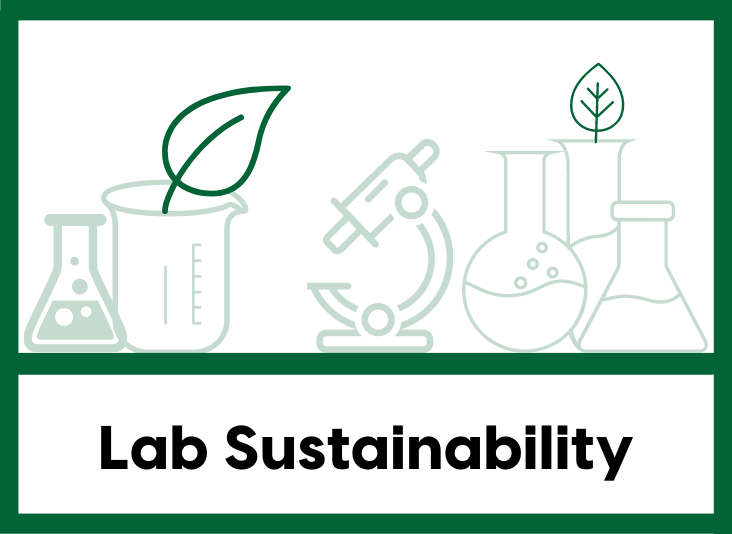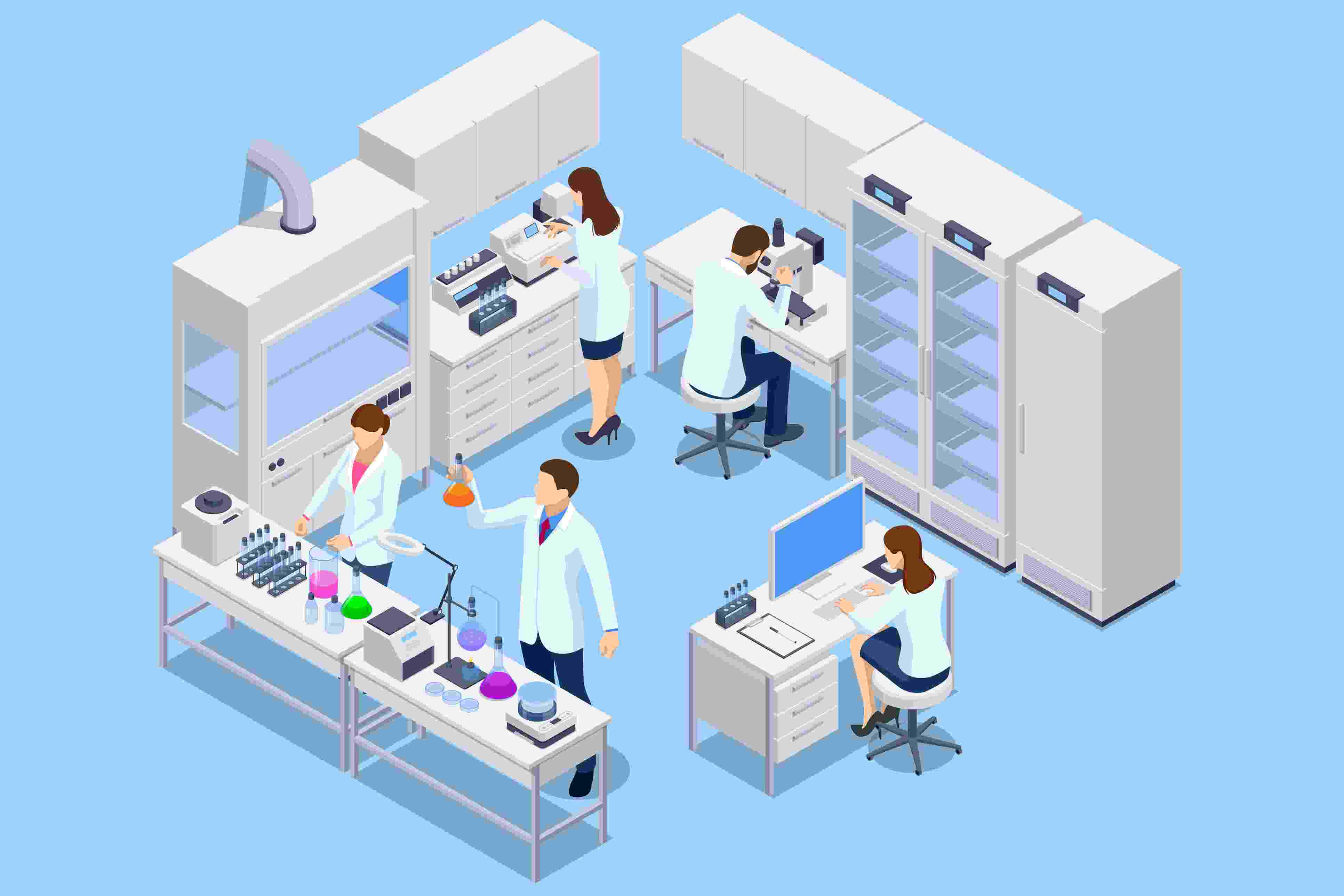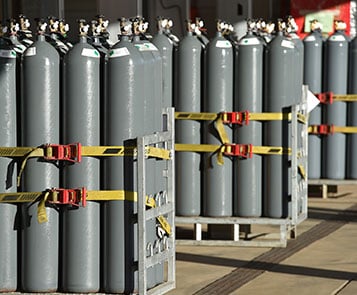Lab Sustainability Programs: 3 Reasons for Adoption
Sustainability has been a topic of increasing interest in recent years, with regulatory bodies and consumers alike demanding rapid prioritization and implementation of sustainable workplace practices. Lab staff across the globe are asking themselves “what is a ‘sustainable lab’?”, “what are the benefits of a lab sustainability program?”, and “how can a lab become more sustainable?” This is true of all industries, but a particular emphasis is placed on life sciences, higher education, and healthcare given their historically high use of chemicals, plastics, and other single-use materials.
Labs use a staggering amount of various resources—power, water, chemicals, and more—for efficient and effective research and production. The high levels of research integrity and sterility these spaces demand mean that lab workers often stick to processes that have been proven to work, even if that means sacrificing sustainability.
There are a number of reasons to adopt a lab sustainability program; this blog will explore three big reasons. First, let’s take a look at some of the challenges that make these programs difficult to implement:
Lab Work Is Demanding
Researchers innovate and make strides in key scientific areas such as healthcare, life sciences, physical sciences, and more. In all such forms, lab workers save lives, support the research and development of new diagnostic procedures, analyze healthcare and environmental samples, and create new compounds and materials that continue to revolutionize our world. Lab staff are aware of their responsibility to uphold the high laboratory standards that protect global human, animal, and environmental health.
The very nature of experimentation, however, is challenging and time-consuming for researchers and lab staff. The focus on optimizing efficiency and results in such a fast-paced, competitive environment means that environmental sustainability (and lab sustainability programs) typically takes a backseat. Often, too, researchers simply aren’t aware of the many lab sustainability benefits.
Additionally, lab experiments can be very long—at times lasting weeks, months, or even years. Or large sample sizes may be required to be processed rapidly—staff at clinical labs may analyze thousands of samples a day. Often, those performing crucial lab tasks are simply too busy to also engage in the complex and time-consuming work of implementing sustainability best practices, or may be wary of incorporating new processes that may compromise a tried-and-true process.
Naturally, lab staff members worry that they will be unable to prioritize their life-changing, vital research while simultaneously concerning themselves with the broad and sometimes overwhelming challenge of implementing sustainability best practices. Maybe they know the lab sustainability benefits, but don’t know exactly how a lab can be more sustainable. Not to mention that lab sustainability is a team effort—and colleagues may be slow to change what has worked for them for many years.
Labs Are Resource-Intensive
On top of this, labs are extremely resource-intensive. This amplifies the need for sustainability program implementation, as the primary goal of operational sustainability is to reduce resource dependence and/or find new alternatives for necessary resources that have a lesser environmental impact.
This can be challenging in a field that requires so many resources to operate, many of which are single-use. Healthcare lab work saves lives, for example, but relies on single-use plastics to ensure sample sterility and integrity. At Harvard University, labs were found to account for about 44% of the University’s total energy use while making up only 20% of the space.
Similarly, all laboratories generate waste and consume abundant amounts of energy to ensure equipment is ready for use at a moment’s notice. According to My Green Lab—a non-profit committed to increasing lab sustainability—labs consume 5-10 times more energy than office spaces and generate 12 billion pounds of plastic waste every year.
Especially in fields that require precision, lessening the burden of resource-intensive processes can be extremely daunting. Coupled with busy researchers, this could mean that sustainability program implementation is never prioritized in any meaningful way, or that lab teams may not understand what a sustainable lab even is.
What is a Sustainable Lab?
A sustainable lab is one that, while simultaneously achieving the crucial research that they need to do, uses resources in a smart and conscious way. Without sacrificing research integrity, sustainable labs work to reduce wasted resources and perform research in such a way that there is as little environmental impact as possible.
There is no one definition of what makes a “sustainable lab,” so it’s up to every organization to define what this means for them. For some organizations, it may involve setting internal or publicly-announced targets for reducing the lab’s environmental impact. For others, it may mean achieving a third-party verification of sustainability efforts, such as the My Green Lab Certification.
A sustainable lab is able to reap the benefits of their hard work by cashing in on some lab sustainability benefits, described below. Naturally, the more robust and well-developed the program is, the greater the returns.
Lab Sustainability Benefits
The idea that lab workers are unaware of the importance and need for further adoption of sustainable practices is entirely false—it’s just that it can often be particularly difficult to balance lab sustainability and high-quality research. There are widespread lab sustainability benefits, though—such as increased safety, improved brand image, streamlined procurement and operations, cost savings, and sustainability goal achievement, among others—so it’s beneficial to implement these practices for long-term success.
The reasons for this are many and powerful. Many governing bodies are pushing strongly for operational sustainability program implementation, forcing organizations to create a sustainability business plan, enforced with fines for noncompliance. To remain compliant and avoid these fines, lab managers must consider the role of sustainability within their worksites and put plans in place to prioritize it.
If compliance isn’t enough of a motivator, studies have shown that sustainability programs can help reduce operational costs and save money in the long run—the less energy and water are used, the less your facility will spend on these costs; the less waste is generated, the less waste will need to be paid to be disposed of. In fact, labs at Agilent Technologies, a leader in the life sciences industry, found cost savings and sustainability goal achievement from improvements to informed procurement. The American Chemical Society (ACS) suggests that better procurement and upstream sustainable waste disposal strategies could result in cost savings as well.
Indeed, labs that don’t explore sustainability within their operations miss out on the abundant lab sustainability benefits.
3 Major Lab Sustainability Benefits
While it is true that there are challenges to lab sustainability implementation, there are also many benefits. In addition to the benefits outlined above, lab sustainability program implementation can achieve:
One: Resource and Cost Savings
Sustainable practices can result in resource savings and decrease related spend. In a world of careful budgets, this is often the key for achieving buy-in from executives and allowing a lab sustainability program to succeed.
Some of the resources that can be saved with an efficient sustainability program include:
- Energy: Labs require near-constant energy use, as machines are almost always on and ready for use at a moment’s notice. This energy typically comes from burning fossil fuels, which in turn pollutes the air, causing health hazards to humans, animals, and global ecosystems. Reducing the use of energy saves money and reduces these carbon emissions.
- Water: Labs cycle through vast amounts of water, particularly in single-pass cooling systems which alone use around 13,000 gallons of water a year or autoclaves that can use up to 90 gallons of water per cycle. Pumping this water into the lab requires energy to retrieve and reduces the planet’s natural supply of fresh water. Lab sustainability programs related to reducing water consumption ensure operational efficiency remains consistent while having a much lower impact on the environment.
- Waste: Labs produce a lot of waste—academic research labs are thought to generate some 5 million tons of waste yearly. Generated waste can be cardboard from shipping materials, expired or spent chemicals, and plastics. Plastic waste is a prominent pollutant that can emit harmful gases if sent to a plastic waste landfill. Additionally. the chemicals that lab staff use daily can be detrimental to the planet when improperly used or disposed of. Waste reduction programs can be implemented throughout the supply chain. These programs seek out lower-impact alternatives to existing waste streams coming into the lab using principles of green chemistry, and can also determine the best options for waste disposal. Emphasis is placed on sustainable waste management like reuse and recycling, which greatly reduces carbon footprint by contributing to the circular economy.
- Excess Spend: The more energy and water used in a lab, the more is spent on these resources and the more waste is generated. Consuming more resources than are needed—and paying for the disposal of excess waste—means that organizations lose money. Implementing a lab sustainability program can reduce operational spend, saving money in the long run.
Two: Increased Trust and Sustainability Mindset
21st century chemical spills, such as the train derailment in East Palestine, Ohio, have eroded public trust for organizations that handle hazardous materials. The public needs to trust that your facility will operate safely and effectively to prevent events that can harm the environment or human wellbeing. Labs can earn trust and goodwill by implementing a sustainability program, proving to the community that environmental and social health is top of mind.
This is one of the more meaningful benefits to sustainability program creation—changing employee and community mindset when it comes to environmental protection. Enacting plans to reduce the generation of hazardous waste, lower the carbon footprint of a lab's day-to-day operations, and decrease the consumption of water and energy can facilitate a more positive relationship between a lab and the people who work inside it and live near it.
Three: Improved Collaboration
Sustainability program implementation requires cooperation and coordination throughout an organization. As with any scientific endeavor, peer support and review are crucial to success. Success requires sharing opinions, being open to energy- and waste-trimming ideas, and allowing give and take. Collaboration is needed among various stakeholders (from facilities specialists, to EHS teams, to executives) to enact solutions to sustainability problems that work within the framework of the organization.
Going through this process will enable greater communication with peers both in-house and at other academic, clinical, and research institutions—promoting greater scientific research capabilities. The result is an organization and operation that is eco-friendly while simultaneously being more sufficient, cost-effective, productive, and more capable of adaptation.
How Can a Lab Be More Sustainable?
The challenges of lab sustainability are here to stay—but it’s becoming more and more within reach as more organizations adopt lab sustainability programs and develop methods to achieve their goals. In turn, lab sustainability benefits will continue to expand as well. Balancing high-quality work with sustainability practices demands innovative and creative solutions as well as new procedures and programs. It will require exploration of new processes, technologies, methods, and ideas while using materials that are healthier for you, your surrounding community at large, and the planet.
It’s also important to note that despite the immense potential for new and creative solutions, not all these methods are experimental. Organizations and scholars have been developing and testing ways to conduct sustainable science for decades, and have published detailed research and tried-and-true methodologies that are proven to yield positive—and predictable—results.
Commitment to sustainability program implementation will result in a gradual shift toward a culture of sustainability, of collaboration, and of savings that will help strengthen the program—as well as the lab and greater community—overall.
Interested in the ways that Triumvirate Environmental can help you implement a lab sustainability program? Contact us today.






